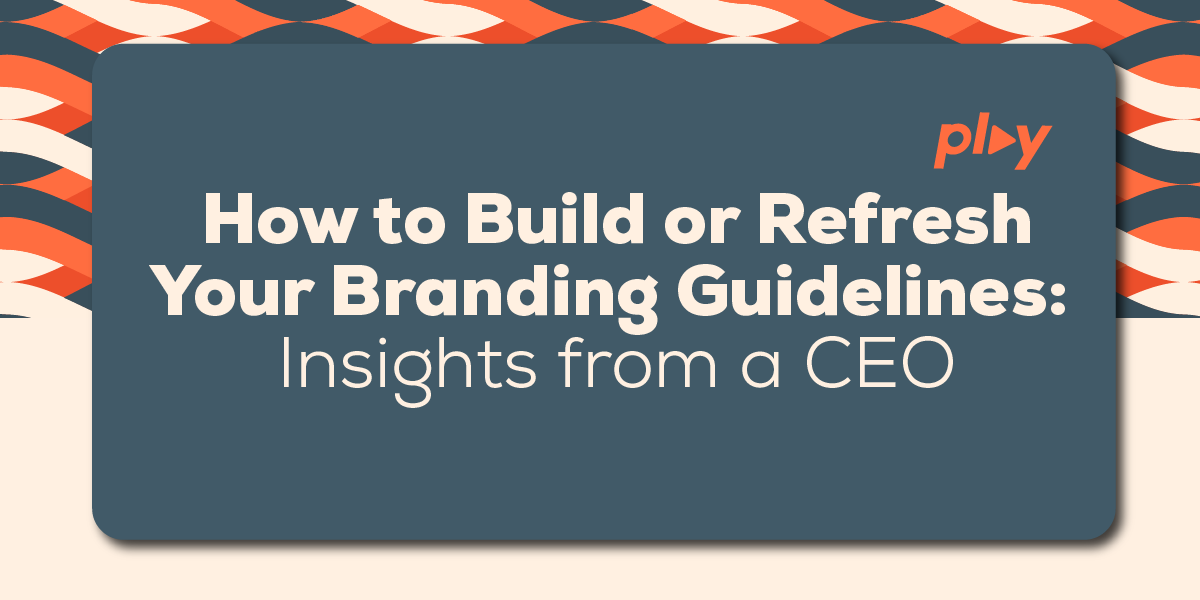How to Build or Refresh Your Branding Guidelines: Insights from a CEO

The brand you build is more than just a logo or a tagline—it’s a promise to your customers. As the CEO of PLAY Creative, I’ve seen firsthand how robust branding guidelines can either propel a company to new heights or hold it back. Whether you’re starting from scratch or refreshing existing guidelines, it’s crucial to approach this process with a blend of creativity, strategic thinking, and data-driven insights.
Understanding the Core of Your Brand
Before diving into the specifics of branding guidelines, it’s essential to understand the core of your brand. This involves delving deep into the company’s mission, vision, and values. According to a study by Gallup, organizations that align their brand with their core values and mission are 3.7 times more likely to be highly effective.
Define Your Purpose
Your brand’s purpose goes beyond making profits; it’s about making a meaningful impact. Consider why your company exists. What gap are you filling in the market? What unique value do you bring to your customers? For instance, at PLAY Creative, our purpose is to deliver innovative marketing solutions that drive measurable growth for our clients.
Identify Your Audience
A strong brand understands and speaks directly to its target audience. Utilize data analytics to segment your audience based on demographics, psychographics, and behavioral patterns. Tools like Google Analytics, HubSpot, and social media insights can provide valuable data to fine-tune your audience segmentation.
Establish Brand Personality
Your brand personality should reflect the human traits that you want your brand to embody. Is your brand professional, quirky, reliable, or innovative? According to a study by Forbes, brands that effectively communicate their personality can increase consumer trust by 32%.
Elements of Effective Branding Guidelines
Once the core of your brand is well-defined, the next step is to document the elements that will consistently communicate your brand to the world. Here are key components to include in your branding guidelines:
Visual Identity
Logo and Usage
Your logo is the face of your brand. Ensure that your guidelines specify the correct usage, variations, and spacing to maintain consistency across all platforms.
Color Palette
Colors evoke emotions and can influence perceptions. According to a study by the University of Loyola, color increases brand recognition by up to 80%. Choose a color palette that aligns with your brand personality and use it consistently.
Typography
Fonts are more than just letters; they convey tone and style. Select fonts that complement your brand’s personality and ensure they are readable across various mediums.
Voice and Tone
Your brand’s voice should be consistent, whether you’re posting on social media, writing a blog, or sending an email. The tone, however, can vary depending on the context. For instance, a tech brand might use a knowledgeable and friendly tone in blog posts, but a more formal tone in business proposals.
Messaging and Taglines
Your core message and taglines should be concise and memorable, encapsulating the essence of your brand. This messaging should be adaptable to different marketing channels while maintaining a unified brand story.
The Role of Data and Analytics
Data is the backbone of effective branding. By leveraging data analytics, you can gain insights into how your brand is perceived and make informed decisions to enhance your brand strategy.
Customer Feedback
Regularly collect and analyze customer feedback to understand their perceptions and experiences. Tools like SurveyMonkey or Net Promoter Score (NPS) surveys can provide valuable insights.
Market Research
Conduct market research to stay updated on industry trends and competitors. This helps in identifying opportunities for differentiation and areas for improvement.
Performance Metrics
Track performance metrics such as brand awareness, engagement rates, and conversion rates. These metrics provide a quantitative measure of your brand’s impact and can guide future branding efforts.
Engaging Your Team
Building or refreshing branding guidelines is not a solitary task—it requires the collective input of your team. Engage employees at all levels to ensure that the guidelines resonate internally and externally.
Workshops and Brainstorming Sessions
Conduct workshops and brainstorming sessions to gather diverse perspectives. This collaborative approach fosters a sense of ownership and ensures that the guidelines reflect the collective vision of the company.
Training and Implementation
Once the guidelines are established, conduct training sessions to ensure that all employees understand and adhere to them. This helps in maintaining consistency and coherence in brand communication.
Final Thoughts
Building or refreshing your branding guidelines is a continuous journey, not a one-time task. As the market evolves, so should your brand. Regularly revisit and update your guidelines to ensure they remain relevant and effective.
Remember, a strong brand is not built overnight; it’s crafted through consistent effort, strategic thinking, and a deep understanding of your core values and audience. By following these steps, you can create a powerful and enduring brand that resonates with your customers and stands the test of time.
In the words of Jeff Bezos, “Your brand is what other people say about you when you’re not in the room.” Make sure those words reflect the true essence of your company.
—
By embracing these principles and leveraging the power of data, research, and analytics, you can build or refresh your branding guidelines to create a compelling, cohesive, and captivating brand story.
